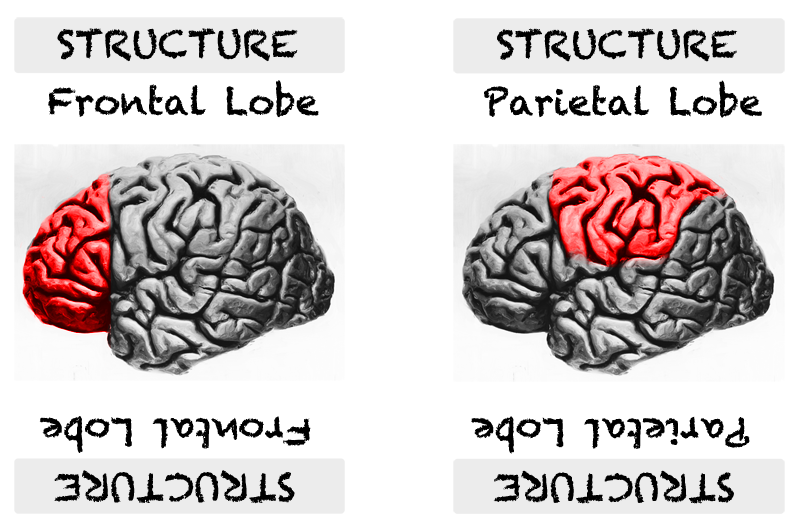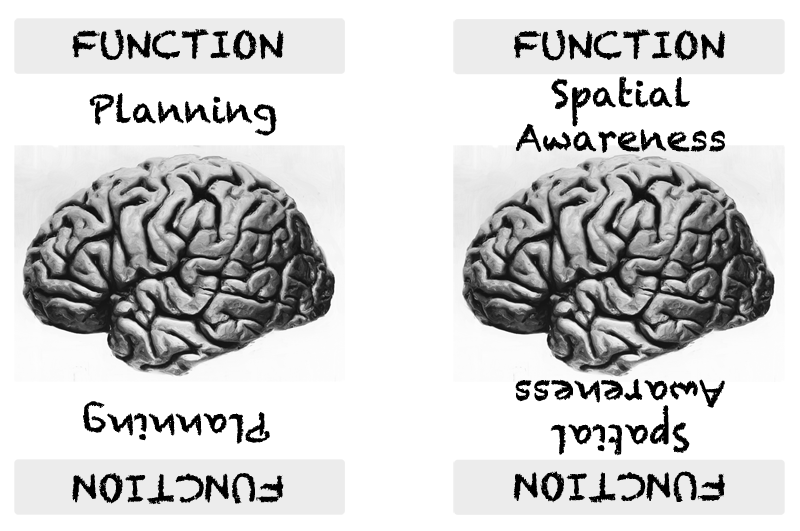Brain Slap!
STUDENT DESIGNERS: Harsh Mehta & Porshia Cook
PURPOSE: The National Science Foundation recently reported that teenagers in the United States perform poorly on assessments of
mathematics and science relative to other developed countries. In a recent review of education practices in the U.S. (Pashler et al.,
2007), a panel of cognitive psychologists determined that methods known to enhance learning and retention were not being employed
in schools. Among the methods recommend to enhance learning, quizzes and game-based learning were cited as being the most
effective way to improve retention. Consequently, we developed a simple game system that could be used to teach a wide variety of
structure-function relationships in neuroscience. Increased attention required for the game should result in increased activity
in the amygdala, which is known to facilitate encoding of long-term memories. It was predicted that engagement and repetition
present in the game would result in improved learning relative to traditional teaching methods that use text-based resources without game mechanics.
METHODS: 136 volunteers were recruited from the York College Research Subject Pool after providing informed consent. A
majority of the volunteers were 18-year-old freshmen from a broad distribution of ethnicities. Subjects were randomly placed in either an experimental or control group. Subjects in the experimental group played a game with game mechanics that were designed to reinforce learning, and subjects in the
control group were exposed to the game materials but not the game mechanics. Subjects received course credit for participation. All research was conducted in accordance with the CUNY Institutional Review Board. Subjects in the experimental condition played a fastpaced card game. Half of the cards contained brain structures that were marked in red (Figure 1). The other half of the cards contained brain functions that were to be matched with
the corresponding structure cards. In this version of the game, 8 structure-function pairs were repeated 10 times to yield 80 cards. In addition to the 80 Structure and Function cards, there were 8 Wild Cards. A 20-minute timer was used to time each round of gameplay. Subjects could refer to a "Cheat Sheet" that had all the structure-function relationships on them. Paper and pencils were used to keep score and respond to the post-treatment assessment. In the game, competitors must successfully pair structurefunction relationships that appear on separate decks of playing cards. The player who makes the most successful pairings wins. The game requires both speed and accuracy to win. The rules of the game are as follows:
- How to Play: Players draw 5 cards from their deck. Player can only lay down a Structure or Function card on top of its corresponding
card. For example, you can lay down a "Vision" Function Card on an "Occipital Cortex" Structure Card or vice versa. Players who get a Wild Card can lay it down on any pile to keep the entire pile. Players who catch their opponent making a mistake get to keep the entire pile. All claimed cards go into a player's discard pile, which is separate from their deck. You can refer to the "Cheat Sheet" at any time, but you must leave it face down. If no players can lay down a card, keep drawing individual cards until someone can.
- Ending the Game: Players may play as many rounds as they can in 20 minutes. At the end of 20 minutes, players count the total cards in their discard pile. The player with the most cards in their discard pile wins. If players exhaust the deck before 20 minutes, or if they just want to keep
playing, keep score by writing the total cards in your discard pile down between decks. Then, collect all the cards, reshuffle, deal, and start again!
REFERENCES: Pashler, H., Bain, P., Bottge, B., Graesser, A., Koedinger, K., McDaniel, M., and
Metcalfe, J. (2007) Organizing Instruction and Study to Improve Student Learning
(NCER 2007-2004). Washington, DC: National Center for Education Research,
Institute of Education Sciences, U.S. Department of Education. Retrieved from
http://ncer.ed.gov.


STUDENT DESIGNERS: Harsh Mehta & Porshia Cook
PURPOSE: The National Science Foundation recently reported that teenagers in the United States perform poorly on assessments of mathematics and science relative to other developed countries. In a recent review of education practices in the U.S. (Pashler et al., 2007), a panel of cognitive psychologists determined that methods known to enhance learning and retention were not being employed in schools. Among the methods recommend to enhance learning, quizzes and game-based learning were cited as being the most effective way to improve retention. Consequently, we developed a simple game system that could be used to teach a wide variety of structure-function relationships in neuroscience. Increased attention required for the game should result in increased activity in the amygdala, which is known to facilitate encoding of long-term memories. It was predicted that engagement and repetition present in the game would result in improved learning relative to traditional teaching methods that use text-based resources without game mechanics.
METHODS: 136 volunteers were recruited from the York College Research Subject Pool after providing informed consent. A majority of the volunteers were 18-year-old freshmen from a broad distribution of ethnicities. Subjects were randomly placed in either an experimental or control group. Subjects in the experimental group played a game with game mechanics that were designed to reinforce learning, and subjects in the control group were exposed to the game materials but not the game mechanics. Subjects received course credit for participation. All research was conducted in accordance with the CUNY Institutional Review Board. Subjects in the experimental condition played a fastpaced card game. Half of the cards contained brain structures that were marked in red (Figure 1). The other half of the cards contained brain functions that were to be matched with the corresponding structure cards. In this version of the game, 8 structure-function pairs were repeated 10 times to yield 80 cards. In addition to the 80 Structure and Function cards, there were 8 Wild Cards. A 20-minute timer was used to time each round of gameplay. Subjects could refer to a "Cheat Sheet" that had all the structure-function relationships on them. Paper and pencils were used to keep score and respond to the post-treatment assessment. In the game, competitors must successfully pair structurefunction relationships that appear on separate decks of playing cards. The player who makes the most successful pairings wins. The game requires both speed and accuracy to win. The rules of the game are as follows:
- How to Play: Players draw 5 cards from their deck. Player can only lay down a Structure or Function card on top of its corresponding card. For example, you can lay down a "Vision" Function Card on an "Occipital Cortex" Structure Card or vice versa. Players who get a Wild Card can lay it down on any pile to keep the entire pile. Players who catch their opponent making a mistake get to keep the entire pile. All claimed cards go into a player's discard pile, which is separate from their deck. You can refer to the "Cheat Sheet" at any time, but you must leave it face down. If no players can lay down a card, keep drawing individual cards until someone can.
- Ending the Game: Players may play as many rounds as they can in 20 minutes. At the end of 20 minutes, players count the total cards in their discard pile. The player with the most cards in their discard pile wins. If players exhaust the deck before 20 minutes, or if they just want to keep playing, keep score by writing the total cards in your discard pile down between decks. Then, collect all the cards, reshuffle, deal, and start again!
REFERENCES: Pashler, H., Bain, P., Bottge, B., Graesser, A., Koedinger, K., McDaniel, M., and Metcalfe, J. (2007) Organizing Instruction and Study to Improve Student Learning (NCER 2007-2004). Washington, DC: National Center for Education Research, Institute of Education Sciences, U.S. Department of Education. Retrieved from http://ncer.ed.gov.


